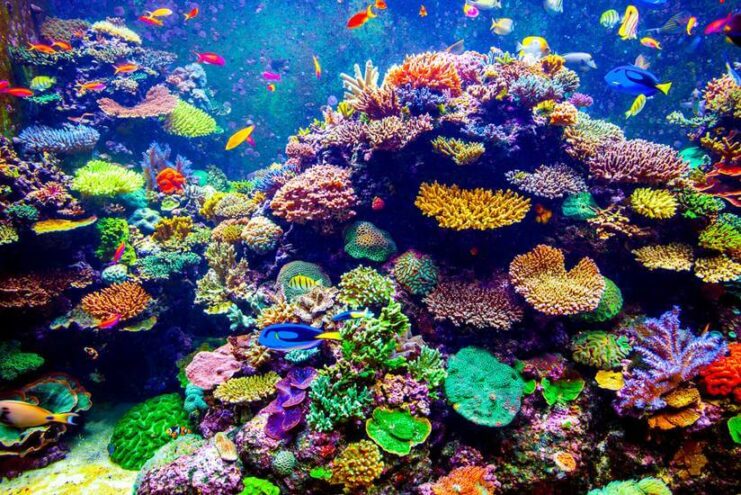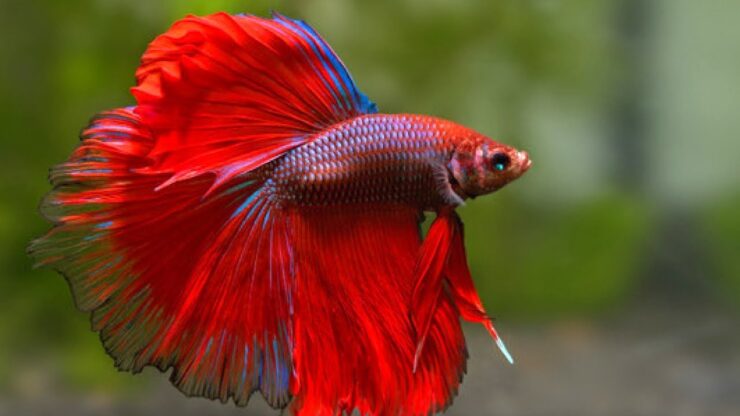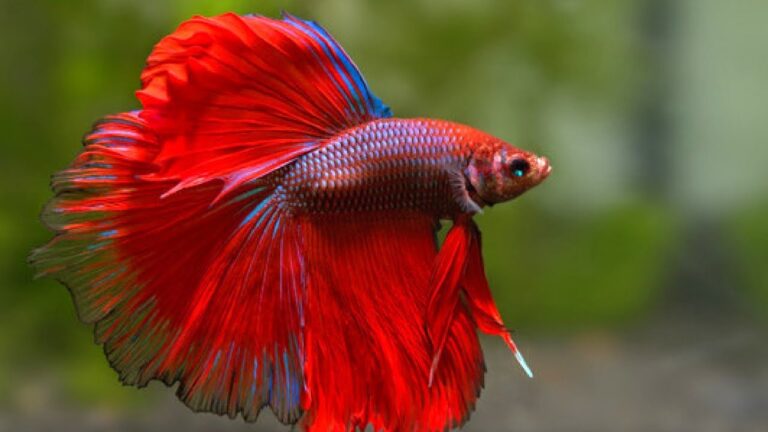- What are Coral Reefs?
- Why are People Worried about Coral Reefs?
- Why are Coral Reefs so Important?
- Why are Coral Reefs Facing Problems?
- Can Coral Reef Fisheries be Sustainable?
- What are the Main Pollution Problems?
- Is Tourism a New Pressure and a New Problem for Coral Reefs?
- Is Coral Bleaching a Major Problem?
- What Can we do to Save Coral Reefs?
- What Can I do to Help Save Coral Reefs?
What are Coral Reefs?
Coral reefs are living organisms, composed of tiny, fragile animals called polyps.
Coral reef development is optimum where sea temperatures are warm (25-290C), and are generally found between 300N and 300S. Corals also prefer clean and clear oceanic waters so are not often found near river mouths where fresh water and sediment from the land flows into the sea.
Although there are hundreds of different species of corals, they are generally classified as either hard or soft coral.
Hard corals grow in colonies forming the primary building blocks of the reef. Coral polyps take in calcium from the seawater to build their skeletons, depositing calcium carbonate (limestone) as they grow. Reef-building hard corals depend on microscopic algae, called zooxanthellae (pronounced zo-zan-thel-ee) to survive.
The zooxanthellae photosynthesise the sun’s energy providing the polyp with oxygen and essential sugars that fuel the secretion of the carbonate skeleton. Given these requirements coral reefs grow best in shallow sun-drenched waters. The living corals that are found on the reef are actually a very small part of the overall structure. They form a thin veneer that overlies the solid limestone foundation.
Soft corals often resemble plants or trees and do not have stony skeletons. Instead they grow wood-like cores for support and fleshy rinds for protection. They are non-reef building corals and as such do not always have zooxanthellae. Soft corals are found in both tropical seas as well as in cold and deep waters.
There are three basic kinds of coral reef formations: fringing reefs, barrier reefs, and atolls. Fringing reefs grow in shallow waters close to the coast, barrier reefs are broader and separated from land by a lagoon, growing parallel to the coast and forming a large and continuous reef. Atolls are large, ring-shaped reefs lying off the coast, with a lagoon in their middle.
They are formed when islands sink or have subsided, and the reef continues to grow upwards. The emergent part of the reef is often covered with accumulated sediments with the most characteristic vegetation growing on these reefs consisting of coconut trees.
Coral reefs are part of a larger tropical marine ecosystem that also includes mangroves and seagrass beds. Mangroves are salt tolerant trees with submerged roots that provide nursery and breeding grounds for marine life, that then migrate to the reef. Mangroves also trap and produce nutrients for food, stabilise the shoreline, protect the coastal zone from storms, and help filter land based pollutants coming from run off.
Seagrasses are flowering marine plants that are a key primary producer in the food web. They provide food and habitat for turtles, seahorses, manatees, fish and foraging sea life such as urchins and sea cucumbers, and are also a nursery for many juvenile species of sea animals. Seagrass beds are often like underwater fields filtering sediments out of the water, releasing oxygen and stabilising the bottom.
Why are People Worried about Coral Reefs?
Most of the world’s coral reefs are in trouble. Over a decade ago scientists reported that some 10% of coral reefs had already been destroyed or degraded beyond likelihood of recovery. Monitoring results from around the world in 1998 and 1999 indicated that less than 30% of coral reefs have completely healthy communities of corals, fish and other species.
Coral bleaching, (corals which are stressed can loose their zooxanthellae causing them to have a whitened or bleached appearance), in 1997 and 1998 had severe impacts. Large parts of many reefs lost 90% of their live coral cover, including colonies as much as 1000 years old. In other areas over the past 30 years, similar damage has been caused by the coral-eating crown of thorns seastars.
Reefs grow very slowly, but are able to recover their extent and species diversity if ambient environmental conditions improve or remain constant. The combined effect of direct human impacts, and natural threats to reefs, such as predation from Crown of Thorns seastars, outbreaks of disease and increasing frequency of coral bleaching and severe storms can however overwhelm the recovery capacity of many reef systems. For many people this is a crisis calling for immediate action.
Why are Coral Reefs so Important?
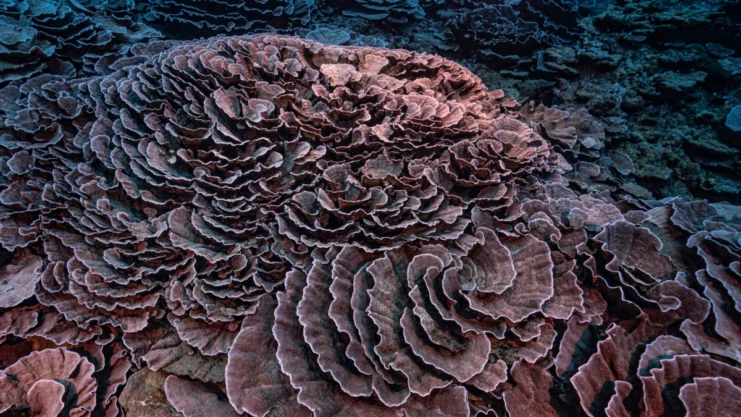
Corals in one form or another have been an important structural feature of reefs in shallow tropical seas since the days of the dinosaurs, 75 million years ago. Coral reefs of the type we see today have been around for about 25 million years. They are highly productive and biologically diverse.
They are home to members of all the phyla or major groups of the animal kingdom. Put simply, they are a key part of the natural heritage and of the stock of biological diversity of the world. The productivity of healthy coral reefs sustains a rich interlinked network of species that has been the main source of food and resources for many tropical coastal and island people since the time of the first humans.
The biological diversity of reefs is a natural treasure which may support future activities yet undreamed of. Already reef species are yielding powerful chemicals effective in treatment of disease. In the future reefs may add to the range of species that can be cultivated to provide food, materials and economic support for people of tropical developing countries.
Coral reefs form natural breakwaters protecting the coastal lands and human settlements of many island and continental nations from erosion by storm waves.
The beauty and diversity of coral reefs have long been a source of wonder to coastal and inland people, and mariners. For many communities there is a deep cultural aesthetic, spiritual significance and connection to the reefs.
The development of SCUBA, underwater film and online video (go here), and new technologies which make reefs accessible to large numbers of visitors has made coral reefs a powerful attraction for tourism. Well managed, tourism provides a sustainable means of earning and generating employment opportunities for many people.
In many ways coral reefs have become the marine environments most accessible ecosystem for scientific study and popular appreciation. By using coral reefs as reference and monitoring sites, and as a result of their linkages to other marine environments by currents, they are can provide good indication of the state of shallow marine environments throughout the world.
Why are Coral Reefs Facing Problems?
The majority of reef loss or damage is not deliberate. An international conference of reef managers concluded that ignorance of coral reef importance and function is a key factor in continued reef degradation. Reefs are being destroyed by an accumulation of stresses arising from human activities, on top of long term changes in the oceans and atmosphere, and natural stresses of highly variable seasons, severe storms, earthquakes and volcanic eruptions.
In many situations the extra impacts are overwhelming the capacity of reef communities to recover from natural damage impacts. This is reflected in reports of increased incidence of coral diseases, as well as the more dramatic impacts of widespread coral death.
A small amount of destruction is deliberate. Some reefs are covered with sand, rock and concrete to make cheap land and stimulate economic development. Others are dredged or blasted for their limestone for building materials, or to improve navigational access and safety.
Most human stresses on reefs come from two causes. The first is unmanaged fishing which results in over-fishing, removing so many fish that the ecological community is changed; and destructive fishing using chemicals or explosives to target particular species or simply to catch fish when numbers are too low for conventional methods to produce an adequate yield.
The second is pollution, adding types and amounts of chemicals, sediments and sewage not normally part of the reef environment.
Can Coral Reef Fisheries be Sustainable?

Historically, coral reefs have sustained rich local fisheries targeting a range of fish and invertebrate species. Now, technology has made it easier to reach fishing grounds, to find and catch fish and to keep them in good condition until they reach the market. In many areas the demand is exceeding the productive capacity of reef ecosystems, particularly where those ecosystems are stressed by other human impacts. In some cases the removal of the most attractive food fish, the top predators, has led to an unbalanced system and major ecological changes in reef ecology.
As fish become hard to catch, fishers in many areas have turned increasingly to destructive techniques such as poisons or explosives, which further damage reef ecosystems. Experience suggests that most reefs can sustain some level of non-destructive/invasive fishing over very long periods.
Yet recent expansion in the amount, type and purpose of fishing, driven by new technologies and new demands, better transport and aquarium technology for the home or restaurant, has built large markets for live fish and invertebrates at prices far beyond those paid in conventional fisheries. The combination of new and old fisheries has resulted in overwhelming the capacity of reefs in many areas.
There is an urgent need to learn how to manage reefs sustainably with adequate sanctuaries, reference sites and breeding areas free from fishing, and to maintain the species diversity and ecosystem processes of the fished areas.
We have to develop means to manage the demand and trade in reef species. In areas that are not sanctuaries, we must consider increasing the sustainable productivity through aquaculture or sea farming to meet the needs of people in many parts of the tropics. There are already examples of successful farming of reef products such as seaweeds and shellfish. Other species are likely to be farmed for food, pharmaceuticals or as aquarium specimens. The challenge is to develop sustainable techniques that do not themselves cause further pollution or introduce disease.
What are the Main Pollution Problems?
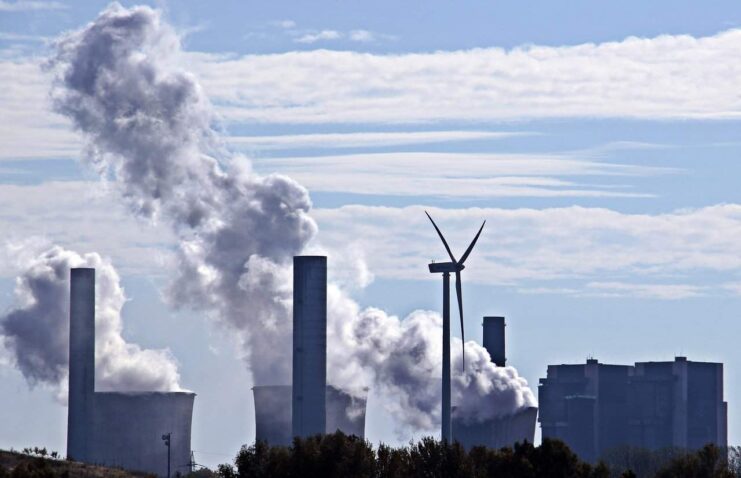
The most obvious concerns are about events that result in massive releases of oil or chemical into the reef environment. There is clearly a case for managing transport and industry to minimise the human error, and improve staff training and equipment design and maintenance, which can be the source of accidents.
In many ways the chronic effects of poor management of waste disposal and the activities of industry, agriculture, cities, towns, households and gardens are a major concern. Regular release of small amounts of chemicals and sediments through land runoff, inadequate waste disposal, poor sewage treatment and minor operational spills of fuels and lubricants from shipping can have subtle and ecologically significant effects.
For example, adult coral and fish populations may appear healthy but their reproductive physiology may be affected so that they do not produce viable young. Or the strength of coral skeletons may be reduced because they incorporate less limestone into their structure. Areas in which apparently healthy communities suffer severe storm damage may not regenerate because settling larvae avoid areas with minute traces of contaminants.
The concern about pollution is that of managing a complex web of effects. It is not generally possible to identify and address a case of a single cause and a single measurable effect. Shallow seas near inhabited coasts are likely to be subject to low levels of many potentially polluting materials whose individual effects may be very low but whose combined effects may be significant.
Is Tourism a New Pressure and a New Problem for Coral Reefs?
Well managed tourism can be an ally of coral reef protection. Tourism operations that raise awareness of the importance of coral reefs, and enable visitors to see and appreciate the wonder and diversity of coral reefs have a powerful commercial incentive to ensure that the sites they visit and the reefs they use are not degraded. Many of the problems of tourism have come from ill-considered coastal development with hotels and infrastructure built with little or no regard for the economic value of the goods and services provided by healthy coral reef ecosystems.
Inadequate arrangements for waste and sewage disposal in developments can be very damaging to the coastal environment, and costly to repair. There are also examples of marine recreation operations with untrained staff and no operational guidelines, which causes further damage to the reefs through inappropriate activities, and failing to raise awareness of their guests of the critical rules of reef usage.
Tourism can be a threat but it has the long term potential for sustainable development and employment benefits to communities in tropical coastal regions. The challenge is to learn effective management so that the measures necessary to protect the environment are recognised and factored into the costs of establishing and continuing tourism operations.
Is Coral Bleaching a Major Problem?
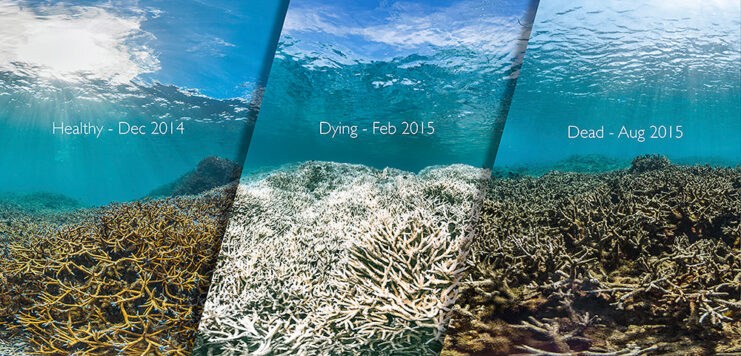
When corals are stressed they loose the algae cells (zoozanthellae), that normally live in their tissues. This causes the coral to bleach (turn white). The algal cells support coral reef growth through photosynthesis and the provision of sugars and oxygen, and are thought to provide an estimated 80% of the energy needs of the coral animal. Consequently, if the stress eases quickly and the corals are able to reabsorb new plant cells it is likely that they will recover. If however, the stress is severe or lasts a long time the coral is likely to die, as was the case in many regions in 1998.
Several factors and combinations of factors can cause stress in corals. These include low salinity, presence of pollutants, extremely high or low water temperatures, and high light levels, particularly when seas are calm so that light penetrates deep into the water column. High water temperatures are the primary source of this stress.
Coral bleaching has been recorded on several occasions since the 1970s. There were major episodes of coral bleaching in 1997, 1998 and then in 2005 when high mid summer water temperatures were recorded in parts of all the tropical seas and oceans with widespread and severe coral bleaching and coral death reported.
The warm water events of 1997, 1998 and 2005 were severe, but the International Panel on Climate Change has advised that as a consequence of observed and predicted atmospheric change, such events are likely to become more frequent.
There is some evidence to suggest certain reefs are more resilient due to coral species composition and/or other environmental factors. We also know that in very warm areas such as the Red Sea coral species can survive unaffected by temperatures that cause severe bleaching in other tropical seas. But, the process that enables corals to adapt is not yet understood.
In light of the increasing frequency of high temperature stress predicted, and while critical scientific data is gathered, efforts must be focused on reducing or removing as many immediate human stressors as possible to give coral reefs a fighting chance for natural recovery from bleaching events.
What Can we do to Save Coral Reefs?
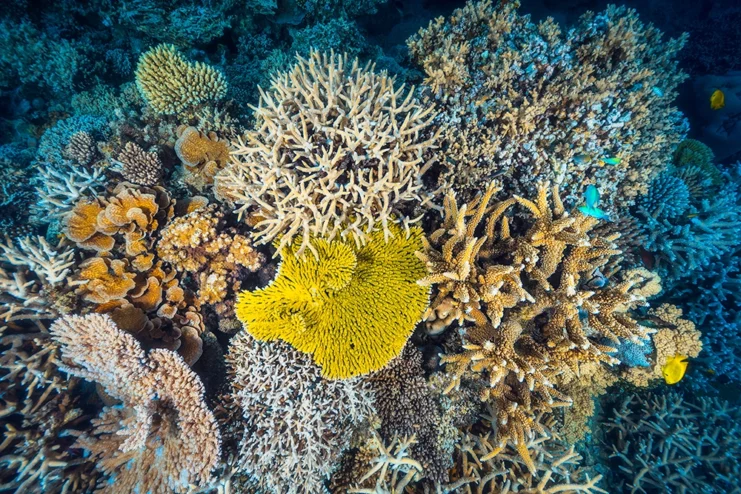
Communities and governments cannot manage the species or the biological and physical processes of the reef. But we can seek to manage those things that humans do which damage coral reef environments and communities. To do this requires major changes in many long established thoughts and perceptions. We must learn to fish in ways that we can demonstrate to be sustainable without destroying the ecosystem that produces the fish. We can no longer assume that the resources of the sea are limitless and that we can do no harm by unmanaged fishing and collecting.
We must recognise and make specific decisions about the costs of waste disposal. Either we accept the costs of waste treatment before it is discharged into waterways, or we accept environmental impacts. We can no longer simply assume that the sea is the cheapest and most effective place to dispose of sewage, urban, agricultural and industrial waste.
If we want to save reefs and other marine environments we must develop the means to manage our uses and impacts so that they do not exceed the self repair capacity of those environments. That means reviewing and constraining our expectations of many activities, and forms of behaviour, that have in the past been regarded as the freedom of the seas.
What Can I do to Help Save Coral Reefs?
- Avoid purchasing souvenirs or products made from coral or any threatened or endangered marine species (e.g turtle shells).
- Choose seafood products that come from certified, well managed and sustainable fisheries. Certified products are available in most supermarkets – check the product label, or visit: www.fishonline.org
- While traveling, choose resorts and tour operators that employ eco-friendly measures, such as the treatment of all sewage and wastewater.
- Support marine and coastal protected areas by taking guided tours, visiting information centres, and respecting the local regulations.
- Do not drop litter or dispose of unwanted items on beaches, or in the sea.
- Reduce your carbon footprint by supporting carbon neutral programmes.
- Avoid purchasing tropical wood furniture or products obtained from clearcut tropical forests causing siltation damage to coral reefs.
- As a diver or snorkeller, choose tour operators that use mooring buoys or drift diving techniques rather than anchors that can cause reef damage.
- As a diver, practice buoyancy control skills in a pool or sandy area before diving near a coral reef. Make sure your gauges and equipment are secured to avoid accidental contact with the reef, and never touch, stand on, or collect coral.

